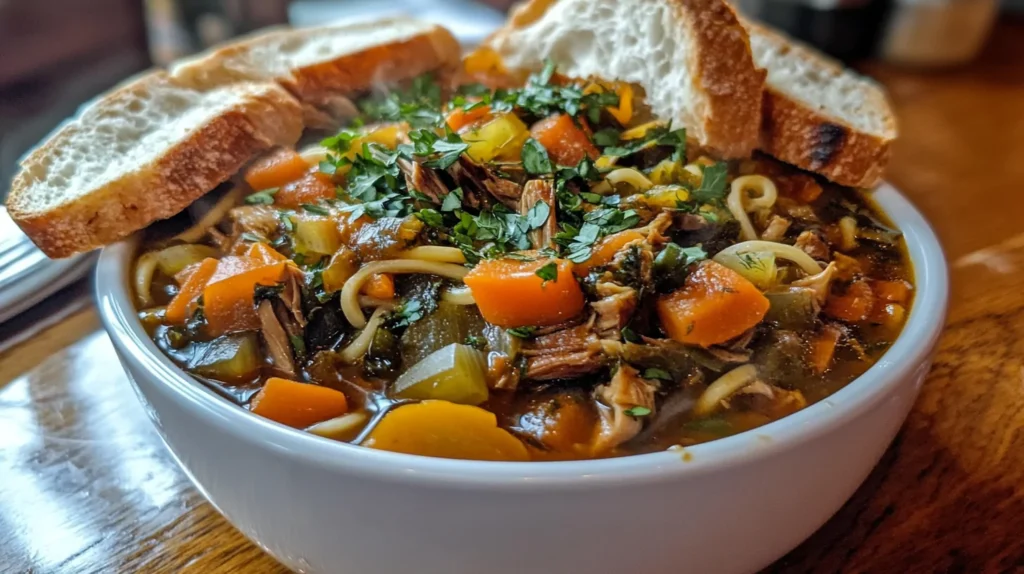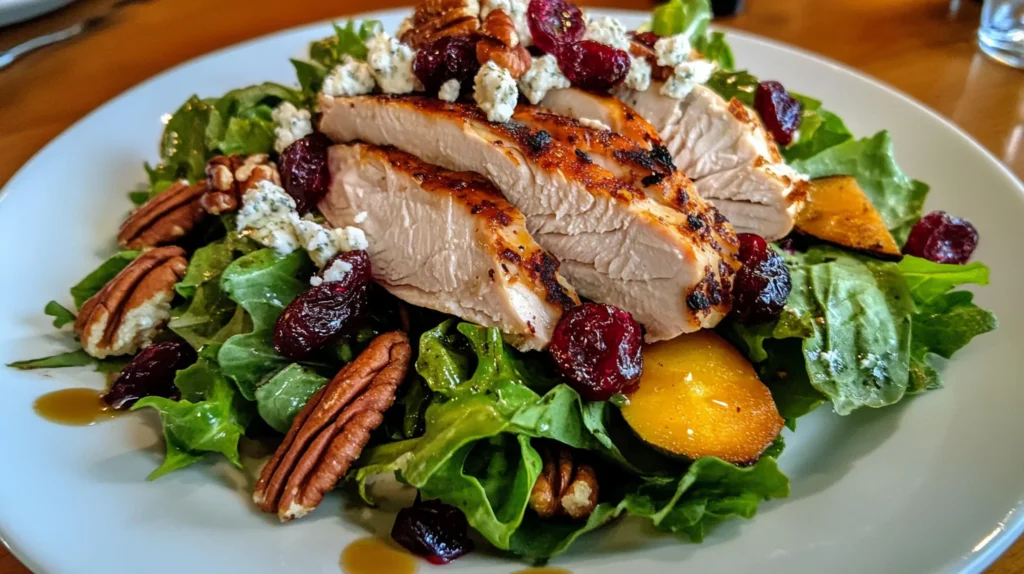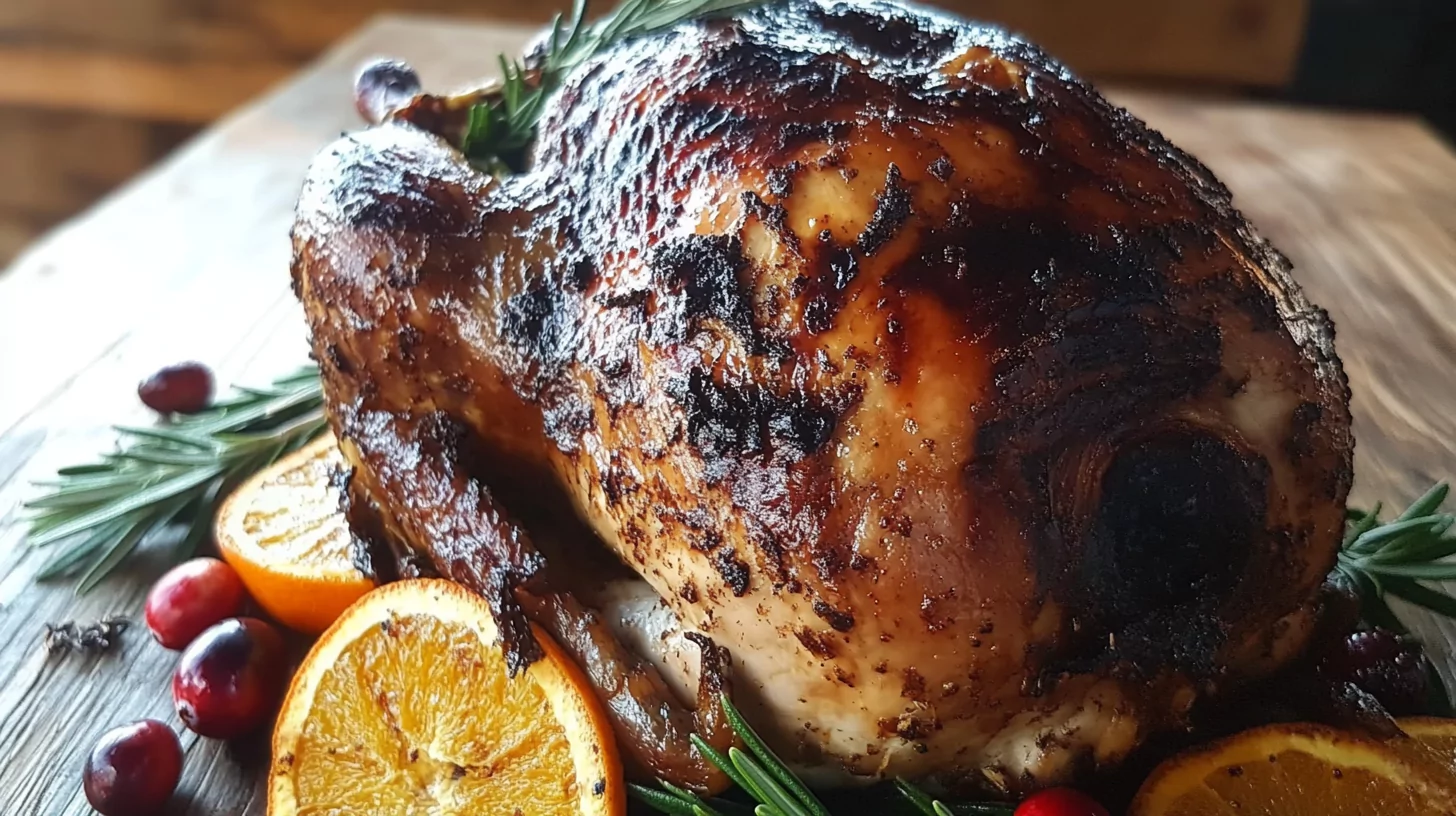Introduction to Wild Turkey Cuisine
Have you ever wondered about the best way to eat wild turkey? 🦃 Unlike the farm-raised ones sitting pretty in your grocery store freezer, wild turkeys bring a unique gamey flavor to the table. They’re leaner, more flavorful, and—let’s be real—a lot more exciting to cook! But getting it right can be tricky, especially if you’re new to cooking game meat.
Wild turkey isn’t just food; it’s an adventure. From hunting (or sourcing) to savoring every bite, this bird takes you on a flavorful journey. Let’s dive into everything you need to know, from preparation to the best recipes, ensuring you don’t end up with a dry, chewy disappointment on your plate. For more inspiration, check out wild turkey recipes to impress and savor every bite.
Why Choose Wild Turkey Over Store-Bought?
So, why go for wild turkey when you could easily grab a plump one from the store?
- Flavor Profile: Wild turkey offers a richer, more robust flavor that farm-raised birds can’t match. It’s like the difference between fresh-picked fruit and canned fruit—one’s bursting with life, while the other is just… meh.
- Health Benefits: These birds roam freely, munching on a natural diet of seeds, nuts, and insects. As a result, their meat is leaner and packed with nutrients.
- Sustainability: Hunting and consuming wild turkey can be an eco-friendly choice, especially when done responsibly.
Nutritional Benefits of Wild Turkey Meat
Let’s talk about what’s on your plate. Wild turkey meat is a nutritional powerhouse. Check out this table to see why it’s worth adding to your diet:
| Nutrient | Amount per 100g |
|---|---|
| Protein | 24g |
| Calories | 135 kcal |
| Fat | 1g |
| Iron | 1.5mg |
| Vitamin B6 | 0.9mg |
💡 Pro Tip: If you’re trying to cut down on fat and boost protein, wild turkey is the way to go!
Preparing Wild Turkey for Cooking
Alright, you’ve got your bird. Now what? Prepping a wild turkey is a bit different than handling a store-bought one. It requires a little patience, but trust me, it’s worth it.
Field Dressing and Cleaning the Bird
First things first, you’ve got to clean that turkey. If you’ve hunted it yourself, this means field dressing (removing the insides). Don’t skip this step; it’s crucial to avoid any gamey, off-putting flavors.
Here’s a quick breakdown:
- Remove the Feathers: Plucking is time-consuming but results in a beautiful skin-on bird. For a quicker option, skin the turkey entirely.
- Eviscerate: Carefully remove the entrails.
- Wash Thoroughly: Rinse the bird inside and out with cold water.
Common Mistakes When Preparing Wild Turkey
Let’s face it—nobody wants to ruin a good bird. Here are a few common errors to avoid:
- Skipping the Brine: Wild turkey can dry out quickly. Brining adds moisture and flavor.
- Overcooking: Its lean meat cooks faster than you think. Use a meat thermometer!
- Not Removing Silver Skin: This connective tissue can make the meat tough. Trim it away for better texture.
Tips for Tenderizing Wild Turkey Meat
Worried about ending up with tough meat? Here’s how to keep it tender:
- Brining: Soak the turkey in a mixture of water, salt, and spices for at least 12 hours. This locks in moisture.
- Marinating: Use acidic marinades like buttermilk or citrus juice to break down tough fibers.
- Slow Cooking: Consider roasting at low temperatures for a long time or using a slow cooker.
Cooking Methods for Wild Turkey
Cooking wild turkey can feel like navigating a maze—there are so many options! If you’re wondering about the best way to eat wild turkey, here are some tried-and-true methods to bring out the best in your bird:
Roasting a Wild Turkey to Perfection
Roasting is a classic method that highlights the natural flavors of wild turkey.
Here’s a step-by-step guide:
- Preheat your oven to 325°F (165°C).
- Rub the turkey with olive oil, salt, pepper, and your favorite herbs.
- Place it on a roasting rack in a shallow pan.
- Roast until the internal temperature reaches 165°F (74°C) in the thickest part of the breast.
⏳ Time-Saving Tip: Wild turkey roasts faster than farm-raised birds, so keep an eye on it!
Smoking Techniques for a Flavorful Turkey
Smoking adds a depth of flavor that’s hard to beat. Use hickory or applewood chips for a smoky-sweet aroma.
Steps:
- Preheat your smoker to 250°F (120°C).
- Rub the bird with a spice mix and a bit of oil.
- Smoke for about 3-4 hours, or until it hits 165°F internally.
🔥 Bonus: Smoking retains moisture, so you don’t have to worry about a dry turkey.
Frying Wild Turkey: Tips and Tricks
Want crispy, golden perfection? Deep-frying might be your best bet.
- Heat oil to 350°F (175°C).
- Lower the turkey carefully into the fryer.
- Cook for 3-4 minutes per pound.
⚠️ Safety First: Always fry outdoors and keep a fire extinguisher handy.
Grilling Wild Turkey: Best Practices
Grilling is another fantastic option, especially for smaller cuts like breasts or legs.
Steps:
- Preheat your grill to medium heat.
- Season the meat and place it on the grill.
- Flip occasionally until cooked through.
Popular Recipes for Wild Turkey
Let’s turn that wild turkey into something unforgettable. Here’s a recipe to get you started:
Wild Turkey Pot Pie Recipe
Ingredients:
| Ingredient | Quantity |
|---|---|
| Wild turkey meat | 2 cups (shredded) |
| Pie crust | 1 (top and bottom) |
| Mixed vegetables | 2 cups |
| Chicken broth | 1 cup |
| Heavy cream | 1/2 cup |
| Salt, pepper, herbs | To taste |
Instructions:
- Preheat your oven to 375°F (190°C).
- Cook vegetables in a skillet until tender.
- Add turkey, broth, cream, and seasonings. Simmer for 5 minutes.
- Pour mixture into a pie dish, cover with crust, and bake for 30-40 minutes.
Serve warm and enjoy a hearty, comforting meal! 🥧
Savory Wild Turkey Soup Recipe

There’s nothing better than a steaming bowl of soup, especially when it’s made with wild turkey. If you’re searching for the best way to eat wild turkey, this recipe is perfect for using leftover turkey or smaller pieces from the bird.
Ingredients:
| Ingredient | Quantity |
|---|---|
| Wild turkey (shredded) | 2 cups |
| Carrots (chopped) | 1 cup |
| Celery (chopped) | 1 cup |
| Onion (diced) | 1 medium |
| Garlic (minced) | 2 cloves |
| Chicken or turkey broth | 6 cups |
| Noodles or rice | 1 cup |
| Salt, pepper, herbs | To taste |
Instructions:
- Heat a tablespoon of oil in a large pot. Sauté onions, carrots, celery, and garlic until fragrant.
- Pour in the broth and bring to a boil.
- Add shredded turkey and noodles (or rice). Reduce heat and let it simmer for 20 minutes.
- Season with salt, pepper, and your favorite herbs like thyme or parsley.
This soup is hearty, healthy, and guaranteed to warm you up on a chilly day! 🍲
Wild Turkey and Cranberry Salad Recipe

For a lighter meal, try this refreshing salad that combines the richness of wild turkey with the tangy sweetness of cranberries.
Ingredients:
| Ingredient | Quantity |
|---|---|
| Wild turkey breast (sliced) | 1 cup |
| Mixed greens | 4 cups |
| Dried cranberries | 1/4 cup |
| Pecans (toasted) | 1/4 cup |
| Goat cheese (crumbled) | 1/4 cup |
| Balsamic vinaigrette | 2 tbsp |
Instructions:
- Arrange mixed greens on a large plate or bowl.
- Top with sliced turkey, cranberries, pecans, and goat cheese.
- Drizzle with balsamic vinaigrette and toss lightly.
This salad is as delicious as it is nutritious. Plus, it’s a showstopper at any gathering! 🥗
Pairing Wild Turkey with Side Dishes
What’s a main course without the perfect sides? Pairing wild turkey with complementary dishes can elevate your meal to restaurant-quality levels.
Ideal Vegetables to Serve with Wild Turkey
Wild turkey pairs perfectly with roasted or steamed vegetables like carrots, Brussels sprouts, green beans, or sweet potatoes. If you’re looking for the best way to eat wild turkey, pairing it with these veggies is a fantastic choice, as their natural sweetness complements the savory flavors of the turkey, creating a balanced and satisfying meal.
Here’s a quick idea:
- Toss vegetables with olive oil, salt, and pepper. Roast at 400°F (200°C) for 25 minutes until caramelized and tender.
Sauces and Gravies That Enhance Flavor
A good sauce can make or break your dish. Wild turkey shines when paired with flavorful gravies or fruity sauces like cranberry or apricot glaze.
Simple Gravy Recipe:
- In a pan, melt 2 tablespoons of butter.
- Whisk in 2 tablespoons of flour and cook for a minute.
- Gradually add 2 cups of turkey or chicken stock while whisking.
- Season with salt, pepper, and a pinch of thyme.
Voila! You’ve got a silky gravy perfect for drizzling over your turkey. 🍴
Common Problems When Cooking Wild Turkey
Cooking wild turkey isn’t always smooth sailing. Here are some common issues and how to fix them.
Overcooked or Dry Meat: How to Avoid It
Wild turkey has less fat than farm-raised birds, making it prone to drying out.
Solutions:
- Always use a meat thermometer to ensure it doesn’t overcook.
- Cover the turkey with foil while roasting to retain moisture.
- Baste frequently with butter or broth.
Gamey Flavor: Causes and Fixes
That strong, earthy taste some people dislike? It’s called gaminess, and it’s common in wild meat.
Fixes:
- Brine the meat overnight with herbs, garlic, and citrus to neutralize the flavor.
- Marinate in buttermilk or yogurt to tone down the gaminess.
Uneven Cooking: Solutions for Beginners
Thicker parts of the turkey, like the breast, can cook faster than the legs or thighs.
Pro Tips:
- Spatchcock the turkey (cut it open and lay it flat) for even cooking.
- Use a roasting rack to allow heat to circulate evenly.
Storing and Reusing Wild Turkey Leftovers
Have leftovers? Don’t let them go to waste. With a little creativity, you can turn them into new, delicious meals.
Best Practices for Freezing Wild Turkey
To freeze turkey properly, follow these steps:
- Slice the turkey into portions for easy reheating.
- Wrap each portion tightly in plastic wrap and aluminum foil.
- Store in freezer-safe bags and label with the date.
Properly stored, wild turkey can last up to 3 months in the freezer.
Creative Leftover Recipes for Wild Turkey
Got leftover turkey? Here are some fun ways to reinvent it:
- Wild Turkey Tacos: Shred the meat, toss it with taco seasoning, and serve with tortillas.
- Turkey Fried Rice: Stir-fry turkey with rice, veggies, soy sauce, and a scrambled egg.
- Turkey Quesadillas: Layer turkey and cheese between tortillas, then grill until crispy.
Conclusion:
Cooking and eating wild turkey is about more than just the food—it’s an experience. From the thrill of sourcing it to the satisfaction of sitting down to a meal, discovering the best way to eat wild turkey brings something special to the table.
💭 Remember: It’s okay if your first attempt isn’t perfect. Cooking is an art, and practice makes perfect. So grab that bird, try these tips, and find the best way to eat wild turkey that works for you. After all, life’s too short for boring meals, right? 😊

